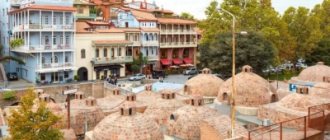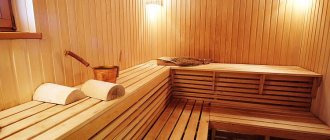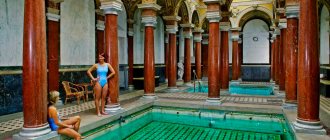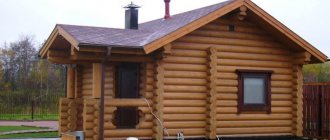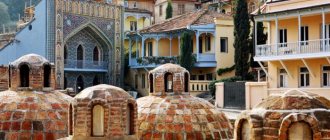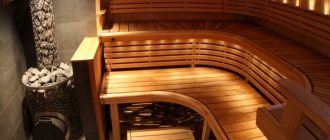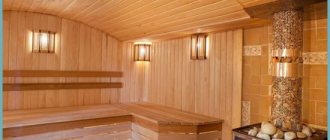Among the most popular and visited places by the Romans were the monumental public buildings for sanitary purposes. Roman baths were intended not only for performing water procedures, but were also the main tool for socialization. The Romans often visited the baths in order to socialize, make new acquaintances, play sports, resolve any issues and simply have fun in a pleasant atmosphere.
- Bath architecture
- Bath structure
- Thermal practices
- Games
- Cleansing
- Hydrotherapy and relaxation
- Visitors to the baths
From the second century BC, the ancient baths of Rome became increasingly important in the lives of citizens and constituted one of the main meeting places during the Empire. Such success of public baths was due to the fact that absolutely all segments of the population had access to them. In addition, visiting the baths in ancient times was completely free.
The most valuable example of the architecture of Roman baths, preserved in Rome in relatively good condition, is the thermal complex built by Emperor Caracalla in the second decade of the 3rd century, as well as the grandiose baths of Diocletian, built at the beginning of the 4th century. Both thermal complexes are striking in their size: the first occupied an area of about 11 hectares, the second - about 16! On the territory there were bathing halls, where there were baths with water of different temperatures, sports grounds and rooms for various purposes: for massage treatments, for playing ball, wrestling, library buildings and even pagan sanctuaries. Roman baths were like entire cities, where everyone could find something to their liking.
Architecture of Roman baths
The architectural perfection achieved in the construction of Roman thermal structures is confirmed by the fact that their model was reproduced many times during the construction of thermal baths even in the most remote regions of the Empire: symmetrical planimetry and adherence to the sequence of arrangement of certain premises became the starting point in the design of new bathing establishments.
Baths of Caracalla
The surviving ruins of Roman baths, in particular the remains of the complexes of the Baths of Caracalla and the Baths of Diocletian, as well as artistic reproductions and some written evidence, make it possible to restore the planimetry of the ancient baths and get acquainted with their design features.
We recommend reading:
The history of the Roman baths
The impressive size of the ancient health centers, the monumentality of their interiors and the richness of the interior decoration, contrasted sharply with the exterior of the ancient baths, which were distinguished by their extraordinary simplicity and the absence of facades as such. Inside, these grandiose complexes were an ingenious architectural and technological structure, demonstrating the high ingenuity and experience of the architects and engineers of that time.
Aqueducts
The aqueducts of Ancient Rome are considered the ideal water supply system of those times, a miracle of engineering! Thanks to them, water was supplied to fountains, baths, and private homes of rich people. The Romans used water for drinking, cooking, keeping clean, and public toilets were constantly flushed.
Operating principle and purpose
Essentially, aqueducts are a system of irrigation canals laid across various landscapes. Water from the source flowed into the aqueduct, from there into a special sump “castella”, and was distributed through pipes to the city. If the water supply system was not built underground, it was built into arched spans and closed at the top to keep the water clean.
The scheme is as follows: first, the end point of the water pipeline is determined, then, moving from end to beginning, they draw a map of the area, fixing the relief and choosing the optimal path. They marked the line of the future highway with wooden piles and began to prepare the area - they dug trenches, cut down trees, dug tunnels in the mountains, and built bridges. Next, block by block, the water supply was extended from the source.
In ancient Rome, 350 km of aqueducts were built and only a small part of them were underground. During the construction of waterways, pozzolanic concrete was used - a mixture of concrete with lime and volcanic ash, a strong, stable material that has allowed many aqueducts to survive to this day. In order for water to flow uninterruptedly into the city, the correct slope of the couloir was required. If the builders encountered a mountain on the way, they had to dig tunnels - the aqueduct bypassing the mountain would not have the required slope.
Famous aqueducts
Over 538 years, 11 water supply systems were built in Rome, which became an example for other countries:
- Aqua Appia was built in 312 BC. with the support of the city rulers Appius Claudius (Apio Claudio) and Gaius Plautius (Gaio Plauzio Venoce). Appius developed a plan for the future water supply system, and Guy was engaged in research work: in the Sabine Mountains, 15 kilometers from the capital, he found a source of clean water, studied its quantity, and surveyed the population about its quality. However, all the glory went to Appius Claudius.
Akwa Appia lay almost entirely underground, its length was 16 km. From the Kapen Gate began the open part of the structure, 90 meters long, which was an arched system. The water flowed all the way to the Bull Market, where it accumulated in reservoirs and spread throughout the city. - The 63-kilometer Anio Vetus aqueduct with a source in the Aniene River was built in 269 BC. Although at that moment it was the longest in the world, Anio Vetus became an unsuccessful project - the river became shallow in summer, water flowed with varying success, and in winter it was completely dirty, so it was used only for irrigation.
- Aqua Marcia, 91 km long, was built in 144 BC., it was fed from several springs near the Aniene River. The Romans considered the water from this aqueduct to be the most suitable for making wine. Several centuries later, Emperor Diocletian laid another branch of the aqueduct to his baths, and Caracalla - to his.
- Aqua Tepula, 18 km long, was built in 125 BC. The water in it was never colder than 17°, hence the name, because tepula means “warm”. In 33 BC. the commander Marcus Agrippa connected the aqueduct with another, Aqua Iulia.
- Aqua Julia became the first under Emperor Augustus. The 23-kilometer-long highway was built by Marcus Agrippa, and connected the aqueduct with Aqua Marcia and Aqua Tepula, laying them on top of each other.
- Agrippa became the creator of the sixth, still working aqueduct, Aqua Virgo. The underground 20-kilometer aqueduct was built in 19 BC. The name Virgo, i.e. “virgin” is associated with the myth that a young girl showed Agrippa a source of crystal clear water. Nowadays Aqua Virgo feeds the Barcaccia, Trevi and the Fountain of the Four Rivers.
- The Aqua Alsietina aqueduct, which dates back to 2 BC, was fed by the waters of the modern lakes Bracciano and Martignano. The not entirely pure water of Alsietina was used to fill Emperor Augustus’ naumachia – artificial reservoirs for scenes of ship battles. The same aqueduct, laid through 358 arches, irrigated the gardens of Julius Caesar.
- Aqua Claudia began to be built during the reign of Caligula and was completed in 52 AD. under Claudius. The source was the Aniene River; in parallel, the Marcha aqueduct was built, with which they were united in the Aqueduct Park (Capanelle). The total length was approximately 69 kilometers, most of which was underground. The water flow was about 190 thousand cubic meters per day or about 2.3 cubic meters per second. The monumental arch of the aqueduct became part of the Prenestine Gate (Porta Prenestina). A branch of the Claudius aqueduct called Celimontano supplied water to Nero's Golden House (Domus Aurea).
- Anio Novus, which replaced Anio Vetus, was built at the same time as the Claudius aqueduct and shares the same sources with it.
- Aqua Traiana was created in 109 by order of Emperor Trojan. The water pipeline was fed by the waters of the springs near Lake Bracciano and supplied it to the Trastevere region. During the wars, the aqueduct was destroyed several times, but was later restored. After restoration by Pope Paul V, the aqueduct was renamed Aqua Paola (Waters of Paul).
- Aqua Alessandrina was built in 226 to supply water to the baths of Emperor Alexander. Part of the 22 km long aqueduct remains in the Pignattara area.
- I advise you to read about: Aqueduct Park in Rome
Ancient baths - structural features
The typical structure of ancient Roman baths involved a sequential arrangement of bathing rooms. Before entering the thermal complex, it was necessary to go through the apodyterium - a room used as a dressing room. It contained stone benches, and in the walls there were special niches where personal belongings could be left.
Changing room in the Roman baths
The locker room was followed by rooms with moist heated air, intended to prepare vacationers for further procedures.
After this, bathers found themselves in the calidarium (from the Latin calidus - “hot”) - a hall for taking hot baths. The room could have a round or rectangular shape. Baths, as a rule, were installed along its perimeter. In some thermal baths, the calidarium had one large bath in the central part of the room. The floor and walls were heated using a unique steam heating system - hypocaust.
Roman hypocaust in ancient baths
The air in the calidarium was hot and humid. The room itself was located in the southern or southwestern part of the complex, which made it possible to additionally use solar heat to warm the room. It is not known exactly what the temperature in the calidarium was, but according to researchers, it most likely did not exceed 50-55 °C.
Structure of the Baths of Caracalla
The room next to the calidarium was called tepidarium (from the Latin tepidus - “warm”). This room was smaller than the previous one, it contained baths with warm water, and the air temperature was maintained at an average temperature. The tepidarium was intended to gradually cool the body and prepare it for subsequent water procedures. After the tepidarium came the frigidarium (from the Latin frigídus - “cold”), equipped with small baths with cold water. This hall opened onto a wide swimming pool - natatio - the final point of the bathing cycle.
After this, visitors to the Roman baths moved to the rooms located on the sides of the central axis of the thermal complex. Among them, the main role was played by gyms: large courtyards intended for physical activity. In addition, the Romans paid great attention to all kinds of body care procedures. The thermal baths housed massage rooms and rooms for anointing with oils.
In addition to the above halls, the structure of the thermal complex included halls for reflection, conversation and relaxation. Almost every health center had a library.
On the territory of such grandiose complexes as the Baths of Caracalla or Domitian, one could see small theaters, trading shops, gardens with fountains and alleys, monumental sculptures and much more.
Graphic reconstruction of the interiors of Roman baths
Greece has everything
The Roman bath rightfully considers the ancient Greek bath as its mother. It was the ancient Greeks who laid the foundations of the public bathhouse, which, in addition to purely hygienic purposes, also had educational, health-improving and sports functions, and in many other ways was an active center for full-fledged and eventful leisure time.
Important! It is important to note that the Greek baths - laconicums, in turn, were largely borrowed from the Egyptian bath tradition. According to very controversial data, the founder of Greek baths is considered to be Alexander the Great, who was inspired, along with his nobility, by visiting the Egyptian baths.
The Greek bathhouse - laconicum - was built in the shape of a hemisphere, which was heated by an open fire from a hearth heated with charcoal. This type of fuel guaranteed a low amount of soot in the outgoing flue gases, high calorie content and, as a result, rapid heating of the internal volume. The widespread use of natural stone and marble resulted in excellent thermal characteristics and, first of all, the heat capacity of the bathhouse. An indispensable attribute of such an establishment were small non-flowing pools with cool or heated water. The Romans, who did not disdain the use of the experience of Greek civilization, taking the laconicum as a basis, created their own bathhouse, having for many centuries foreseen the instruction of dear Leonid Ilyich: “We need it to be like this, only better.”
Ancient Roman baths - thermal practices
The main feature of the Roman baths was the combination of bathing and physical activity. It was these components that in ancient times were considered the key to good health. Thermal treatments were based on the alternation of heat and cold: by exposing the body to changes in temperature, blood circulation was stimulated, which contributed to the renewal of the body. This therapy worked especially well after heavy sweating, which is why physical activity was closely related to hydrotherapy.
The architecture of the Roman baths perfectly corresponded to the need to combine thermal treatments and sports exercises, allowing the visitor to combine the necessary activities at his own discretion to achieve the best result.
Games in the Roman baths
The best start to thermal practice, based on the recommendations of doctors of that time, was to visit the gym to exercise and sweat. After this, hydrotherapy could begin. Quite large areas were allocated for sports activities, which allowed visitors to engage in various disciplines. One of the most difficult, undoubtedly, was the struggle. The competitors rubbed themselves with oils, which caused a lot of inconvenience to the enemy in the fight.
Simpler from a physical point of view were ball games, of which there were several types: some involved the use of balls filled with sand, others - balls with fluff. In addition, in the gyms the Romans organized competitions in fist fights, lifting weights, etc. Women loved to play games based on running.
We recommend reading:
Balbi Crypt
Located in one of the areas of the Eternal City with a huge concentration of historical attractions, the branch of the National Museum of Rome, the Crypt of Balbi, is perhaps the most little-known and…
Read more >>
We recommend reading:
Street names of Rome - interesting facts and secrets
In this article we want to talk about such streets and avenues in Rome, the names of which are not so easy to guess, even knowing their literal translation. Let's find out more about them. After all, each of these...
More details >> Previous Next
Strigil cleansing
After engaging in physical exercise, the Romans began the purification process. To do this, the ancient inhabitants used the so-called special tool - strigil - a sickle-shaped metal scraper intended for scraping off sweat and dirt. Usually this process was carried out by slaves.
Strigil for cleansing the skin, used in ancient baths
Hydrotherapy and relaxation
After cleansing the body with strigil, the Romans began water procedures, going through all the rooms of the Roman baths in sequence: from the locker room to the swimming pool. Refreshed after the sweating room, visitors moved to the calidaruim to enjoy relaxing hot baths and enveloping steam.
The tepidarium served as a transitional stage on the way to swimming in cold water. After hydrotherapy, the Romans could enjoy massage treatments and relax in specially designated areas, chat about daily matters, discuss political issues, or just read.
Modern baths
Modern thermal bath in the photo
Of course, the former grandeur and luxury of the baths in Rome is not available to us in modern times. First of all, this is due to expensive construction, because now, using natural materials and complex communications, it is impossible to charge a small fee for a visit. Moreover, the thermal bath is now just a place for water treatments; there is no need to build a library or restaurant in it; it is enough to divide it into several rooms with an autonomous climate in each.
Modern design has also undergone changes, but all arches, antique statues and columns remain indispensable attributes of ancient steam rooms. The floor is now laid with imitation stone, and instead of marble, stylized tiles are used, but even such savings can only be achieved by private properties and cannot be public.


